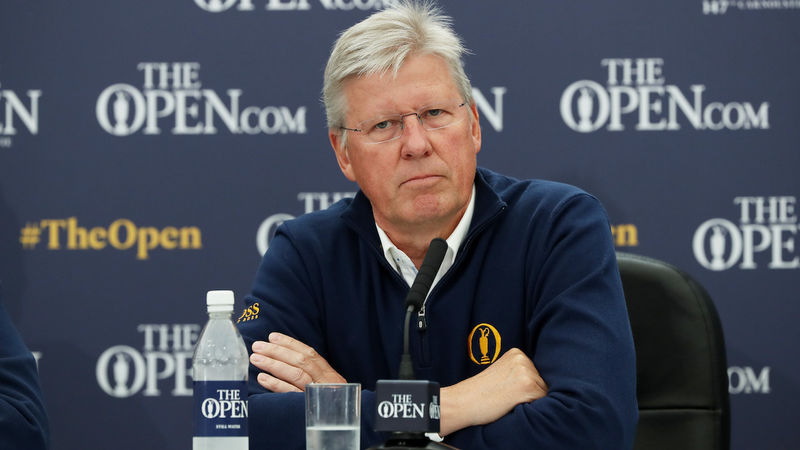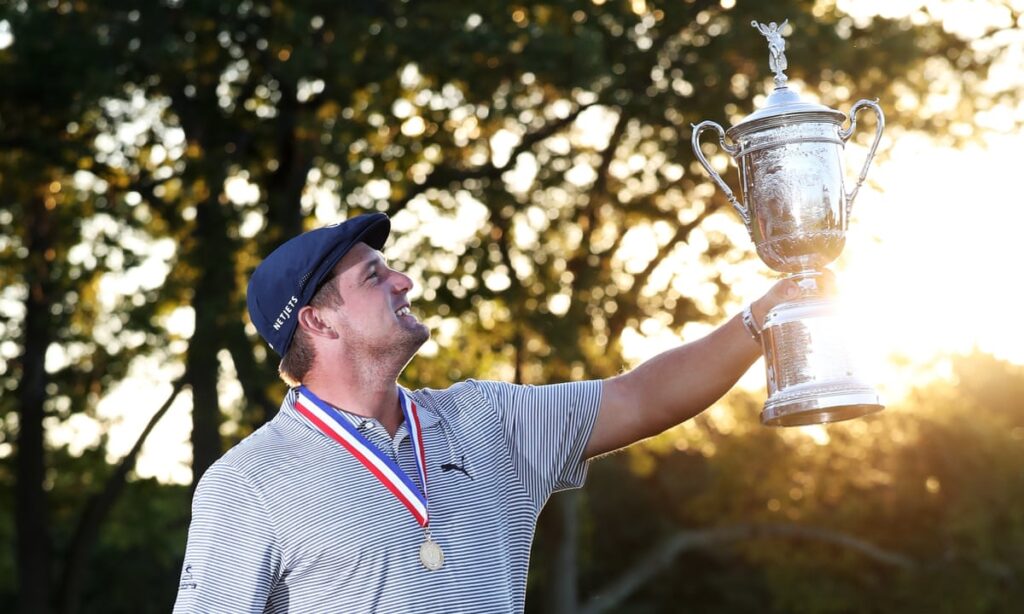R & A Chief Executive Officer, Martin Slumbers indicated fresh talk of bifurcation rule changes that would see professionals along with elite amateurs ruled to use distance-controlling equipment has nothing to with a ‘specific person’.
The R & A and sister ruling body the USGA today announced proposed equipment standard changes including a limit of the driver being 46-inches and also changes with regards to the golf ball.
And in addressing the effectiveness of current equipment testing processes, protocols and standards with respect to distance limits both the R & A and USGA are seeking comment from equipment manufacturers on three proposed Equipment Standards changes, as follows:
Proposal 1: Club length – reduction to 46 inches available as Model Local Rule (MLR) (Original proposal delivered in 2016 and paused in 2017 due to the Distance Insights project). Comment period ends on 4 March 2021.
Proposal 2: Update on testing method for golf balls. Comment period ends on 2 August 2021.
Proposal 3: Change to testing tolerance – Characteristic Time. Comment period ends on 2 August 2021.
When we talk of ‘specific person’ there is just one – reigning US Open champion Bryson DeChambeau.
DeChambeau topped the 2020 PGA Tour ‘driving distance’ stats with an average of 329.1 yards (301 metres) and with 78 other players averaging 299. 6 yard (274 metres) or more.
The current World No. 8 ranked American, and competing in this week’s Saudi International, drew more attention to his golfing DNA when going public, ahead of last November’s rescheduled Masters, stating he was considering packing a 48-inch driver into the golf bag to take to Augusta National.
DeChambeau actually hit two 400-yard drives in the span of three holes during his first round of last July’s rescheduled Memorial tournament, and then on the 17th hole of ‘Jack’s course’ he unleashed a tee shot, easily clearing the bunker on the left with 348-yards of carry, rolling down the hill toward the green to finish 407-yards from the tee.
The American must have had the green jacket members of Augusta National clearly quivering when in September he used a 46-inch driver to overpower Winged Foot, and one of the toughest courses on the rota, to win the U.S. Open by six shots.
However, Augusta was seemingly saved when DeChambeau, and using a 46-inch driver, finished outside the top-30 and failed to break 70 just once of the four November days.
“This is not person specific,” said Slumbers when asked if the proposed changes had anything to do with a reaction to DeChambeau’s impact since this year returning to the game, and looking more like ‘Hulk Hogan’.
“We were looking at this four years ago and in our ‘Distance Insights’ report, this was one of the options available to us when we were considering this back in February last year.
“We’ve tried really hard in this to be agnostic to individual players, but, inevitably long hitters could be personalised in that and there is no doubt there has been a lot of players who explored the use of longer drivers, not just Bryson.”
Bifurcation, meaning the division of something into two branches or parts, would mean the professional tours and elite amateur competitions could require competitors to use equipment that is restricted while allowing everyday players the benefits that those technological gains bring them.
If the changes are approved a tournament committee could limit the maximum length of driver via what would be called a ‘model local rule’.
As for the professional tours, including the PGA Tour, European Tour, LPGA Tour as well as the major championships all play by USGA or R&A rules, depending on jurisdiction.
The exceptions made at the highest levels — such as the “one-ball” rule used on the pro tours — are all covered in the rule book, typically under local provisions.
After years of discussion on the topic, the governing bodies now appear ready to act on distance gains.
“The research … clearly shows that hitting distances have consistently increased through time, and if left unchecked, could threaten the long-term future of our game at every level and every golf course on which it is played,” said Mike Davis, chief executive officer of the USGA.
“This is the first forward step in a journey and a responsibility the USGA and the R&A share with the worldwide golf community, to ensure that golf continues to thrive for the next hundred years and beyond.”
Slumbers, and a normal member at Crail Golfing Society to the east of St. Andrews added: “The research topics and the proposed changes we have announced will be the focus of our attention in the coming months, and we look forward to gaining insights from the golf industry and fully understanding their perspectives in key areas.
“We remain fully committed to conducting this hugely important exercise for the sport thoroughly, efficiently and collaboratively.”





